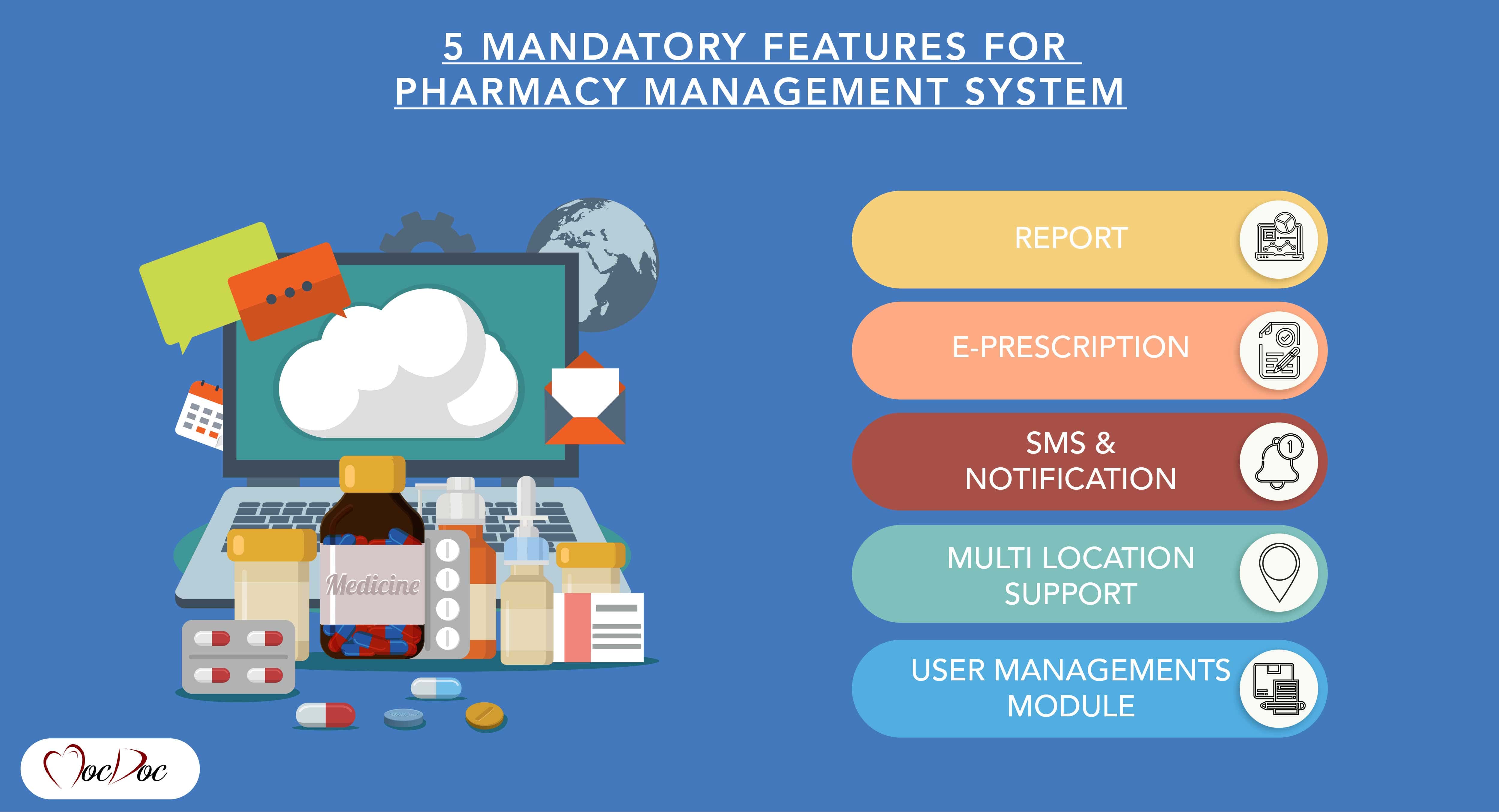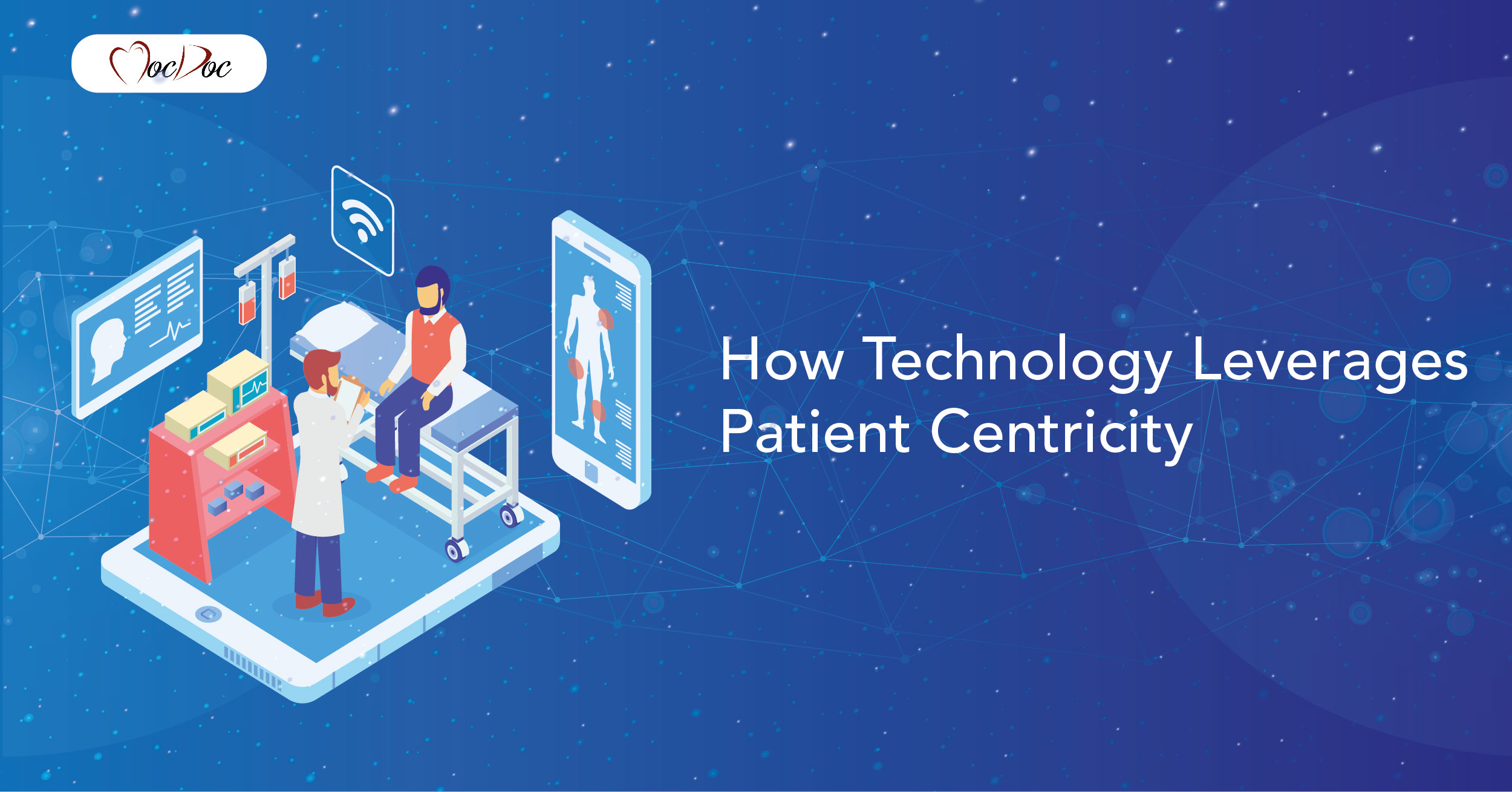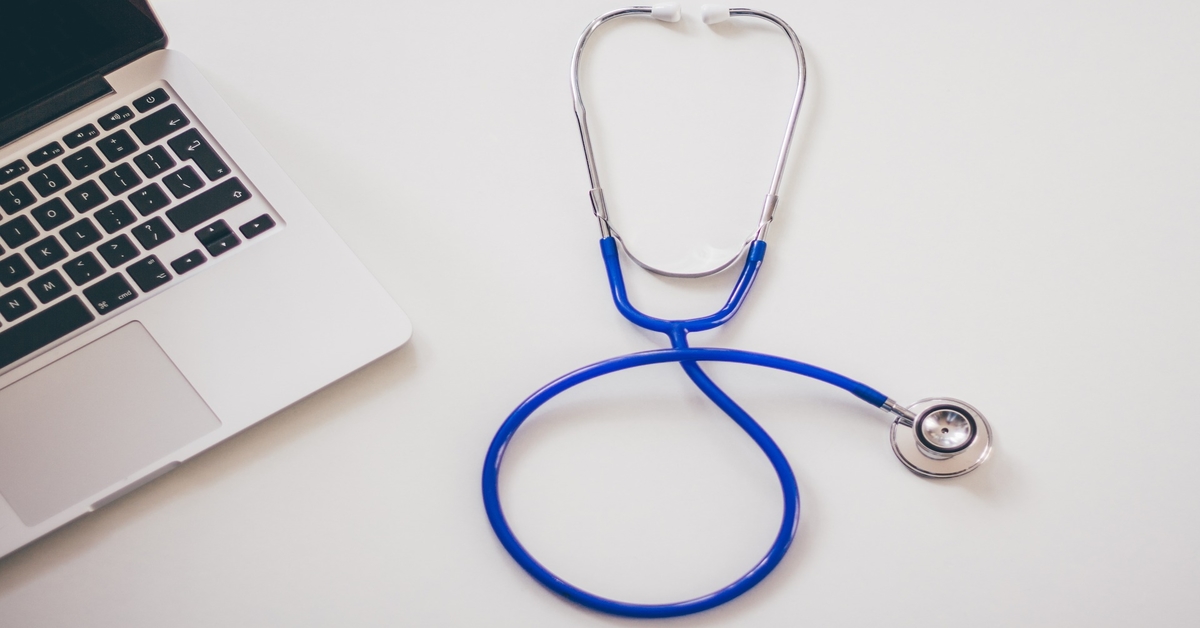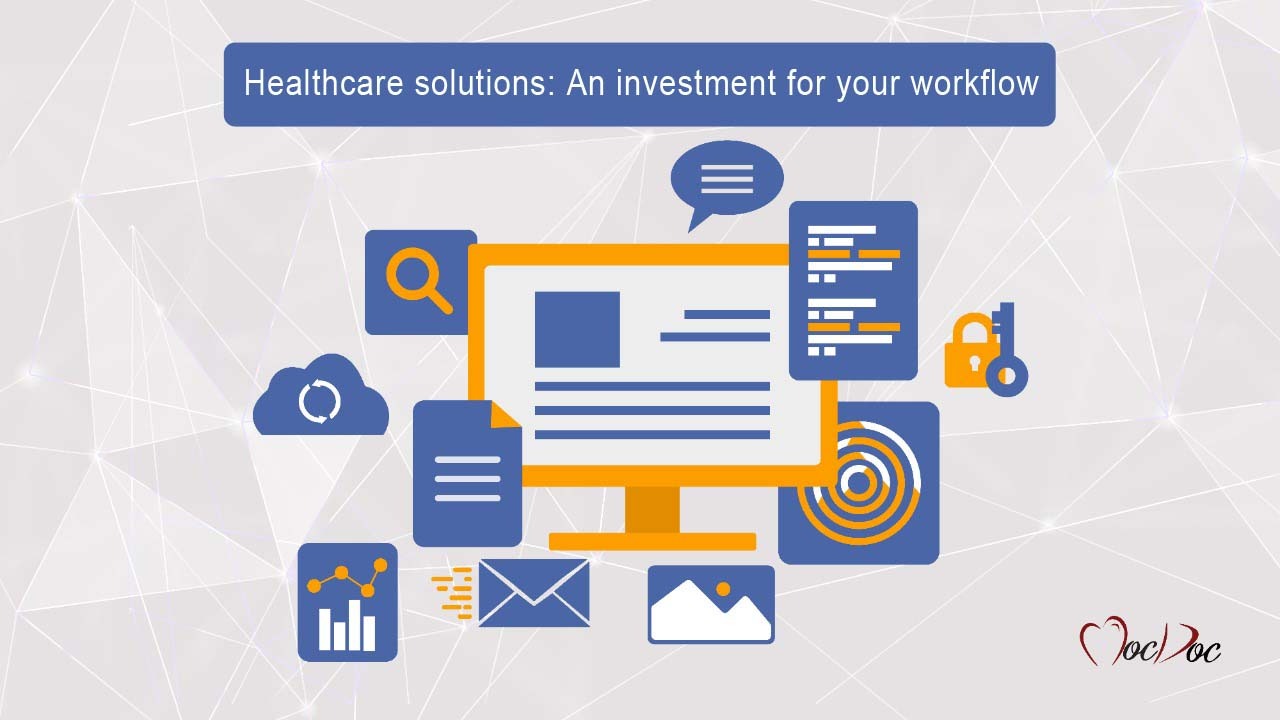MocDoc's Offerings
5 mandatory features for a pharmacy management system
Published By
Sanjana
2019051413:29:08
Category Healthcare

The Pharmacy Management system otherwise referred to as the pharmacy information system stores data systemizes and controls the use of the medication process within the pharmacies.
Medical Technology and Information technology are growing day by day. The system developer makes use of this golden opportunity to help the pharmacist control their stock and choose the right medicine by using the computer program.
The pharmacist makes use of the pharmacy management system to control the pharmacy reliably. Patients sometimes prefer to visit the pharmacy instead of a doctor for minor illnesses, and the system enables the pharmacist to prescribe over-the-counter drugs for these ailments
5 Major Pharmacy Management System (PMS) Features:
The prime purpose of a PMS is to assist the pharmacist in the safe and effective delivery of pharmaceutical drugs.
The pharmacies require some core capabilities and functions to perform their duties effectively. Below are some of the top 5 must-have features for a Pharmacy Management System.
Report:
Pharmacies interact with multiple patients every day, and data regarding each of these interactions are stored within the pharmacy information system. Data may be used later for improving the business strategy or it may be needed during a certification or inspection process.
The reports offer valuable insights into the operations of the pharmacy. It can be used to distinguish the patients who visit the pharmacy frequently for refills, and this can be used to stock accordingly.
E-prescription:
Prescriptions are known to be illegible and this can cause confusion among patients and is also a source of error in dispensing the right medicine. E-prescriptions provide a user-friendly option for patients and also reduce the risk of errors.
The electronic prescription feature can be used by the pharmacy to manage refills and allows doctors to send the new refills directly into the pharmacy management system, allowing rapid dispensing of the medicines. Apart from this, there will be no confusion in offering the right prescription between the physician and the patient.
SMS and Notification:
With the use of a pharmacy management system, the pharmacist can schedule text messages to be sent to patients intimating them before their prescriptions run out.
The patients can then let the pharmacist if they need a refill, simply by responding to the message. The status updates let the pharmacist keep in touch with the patients, ensuring patient satisfaction.
Multi-Store and Multi-Location Support:
The user can manage stores at multiple locations easily with a pharmacy information system.
Data about stock levels, sales, and returns from multiple stores can be viewed in a single software. Overall reports for the entire chain of stores can be generated, giving the user a complete overview of profit, loss, stock levels, etc.
User Management Module:
This feature allows restricted access to various users. Access to various features can be limited for different users, for easy management. This authentication is classified into two conditions namely
Administrator User: The user can control the buying and selling process, list the medicines, view the stock, and perform other tasks. The user will be able to view the pharmacy list and the pharmacy map easily. It plays an essential role in controlling the sales and stocks being processed every day.
Administrator Authentication User: The users who are authenticated can view all processes including selling reports, transactions, and manipulating the medicine list and the medicine stock. This feature also helps to track regular activities and generate daily accounts by utilizing the multisite software.
Related Articles
How Technology Leverages Patie...
Imagine the following scenarios: An electroca..... Read more
What are the different types o...
The healthcare sector is facing pressure to move t..... Read more
Healthcare solutions: An inves...
How could healthcare solutions be i..... Read more
Universal healthcare - let’s...
Universal health care is a hot topic for discussio..... Read more



